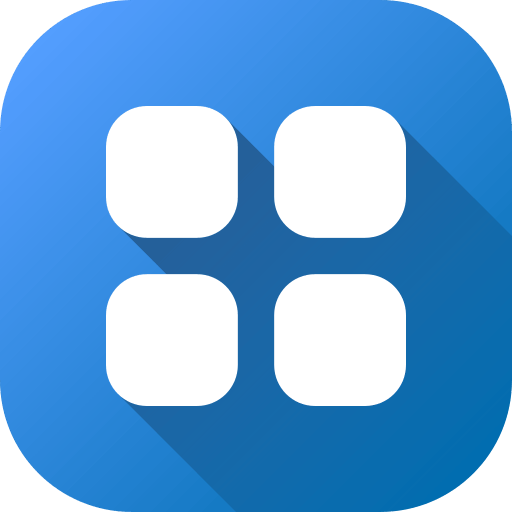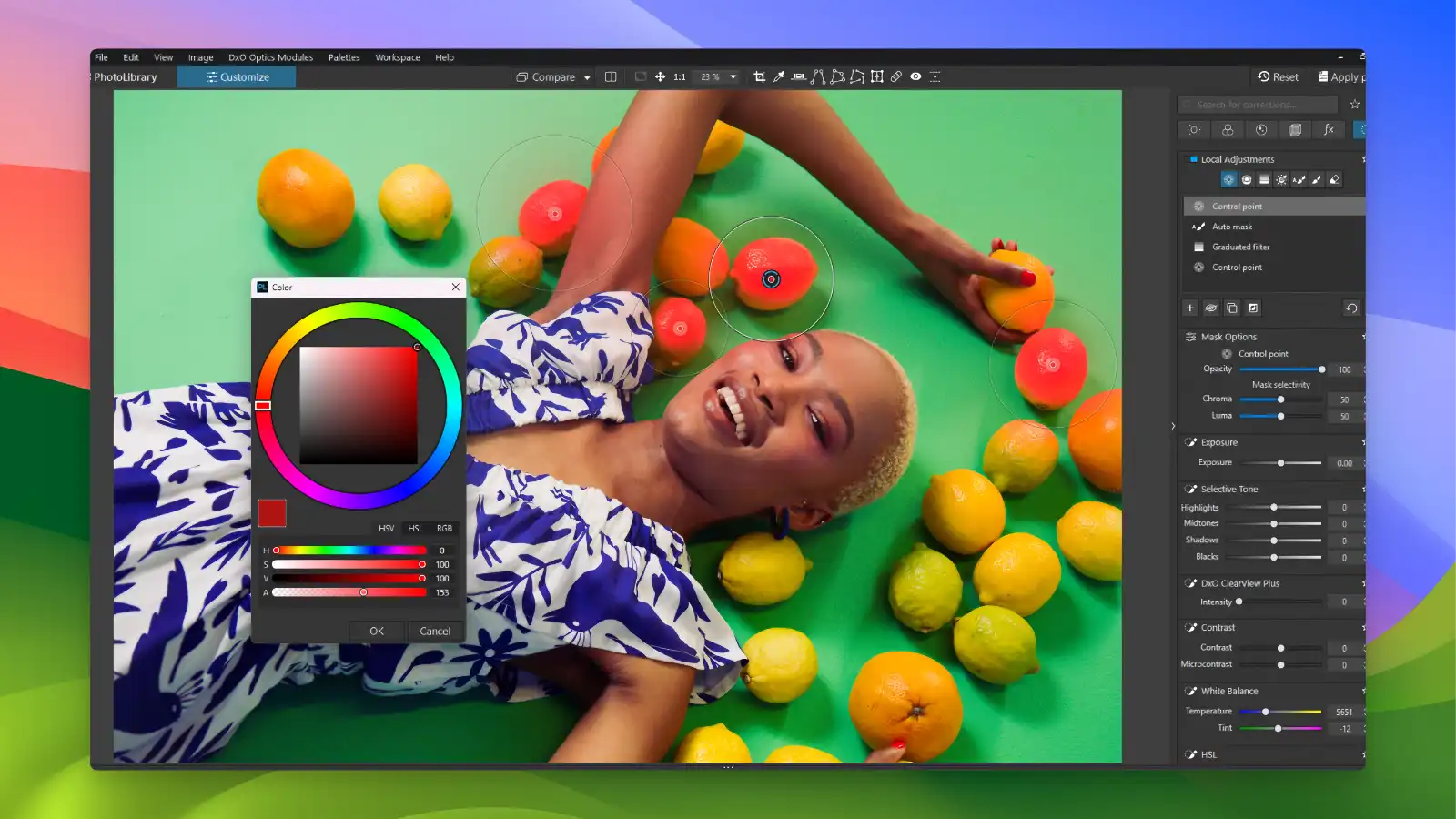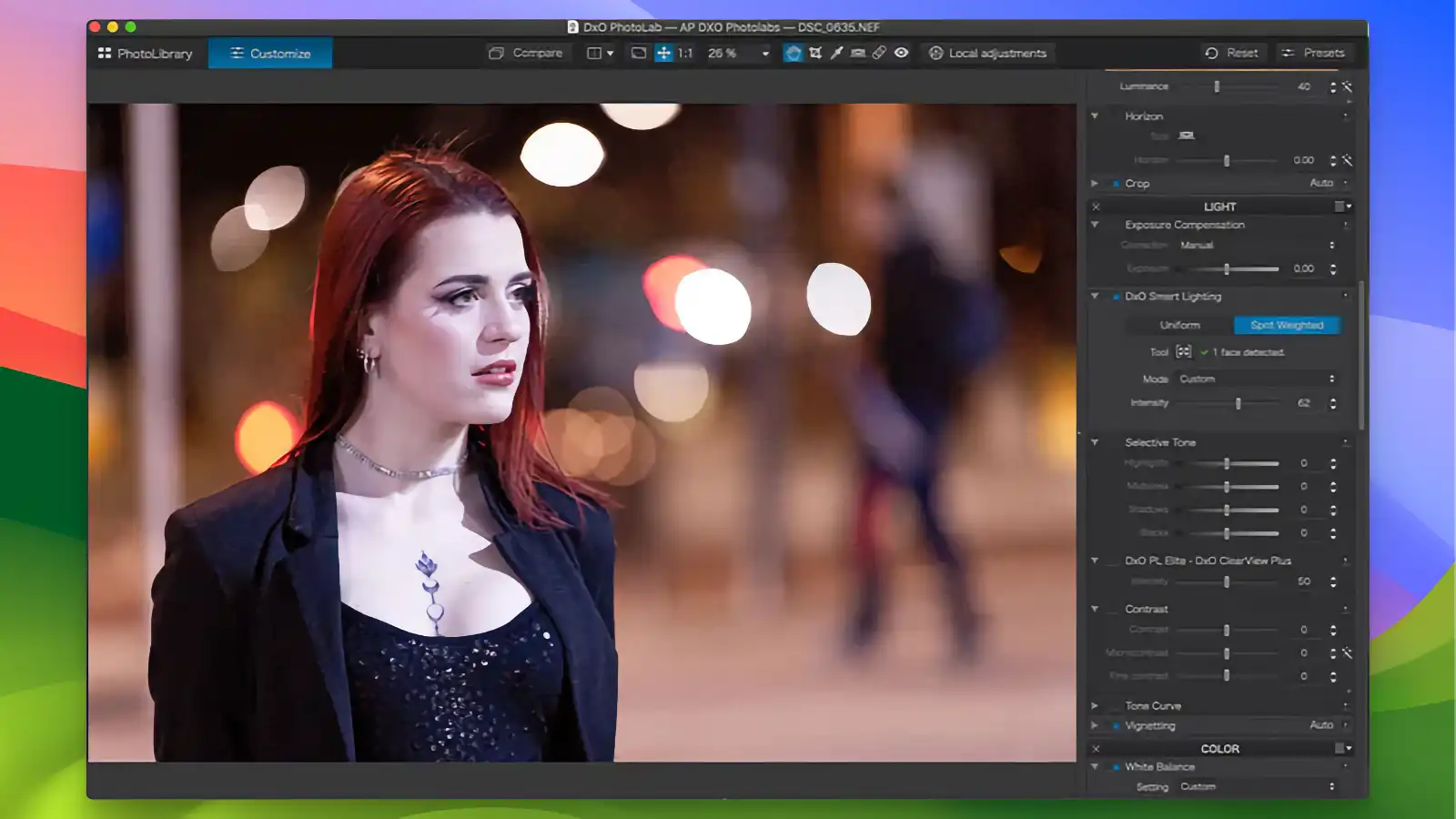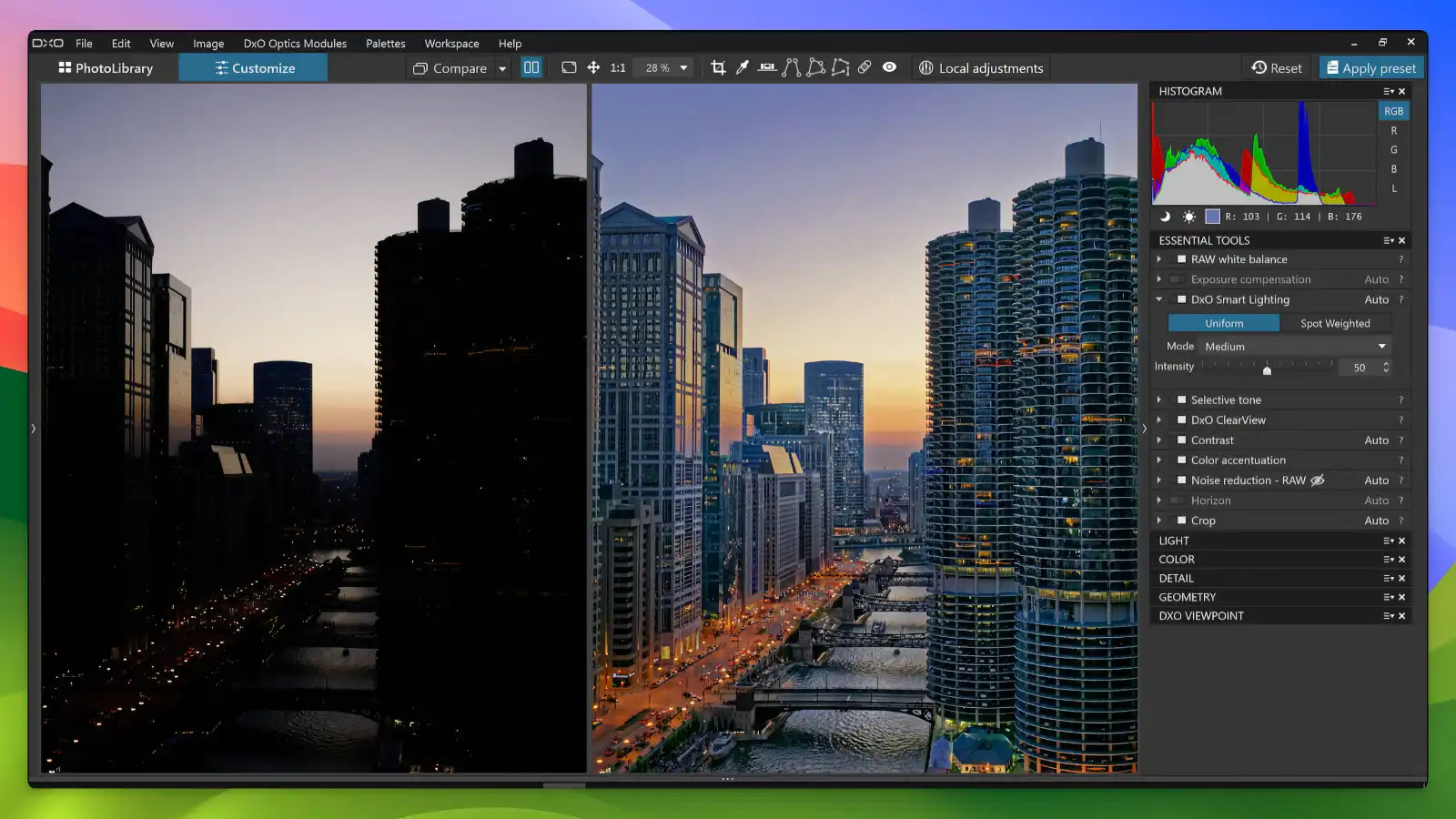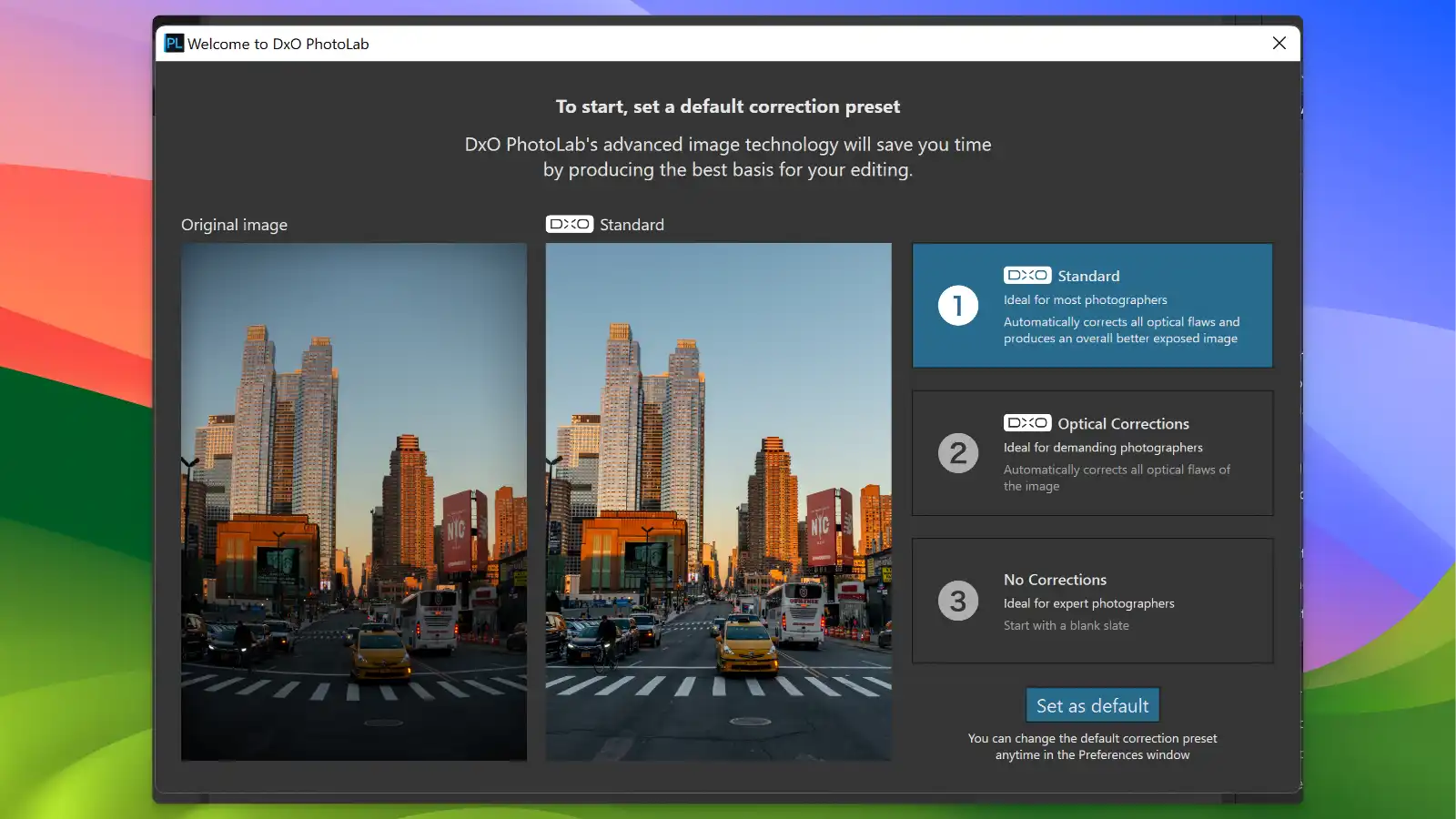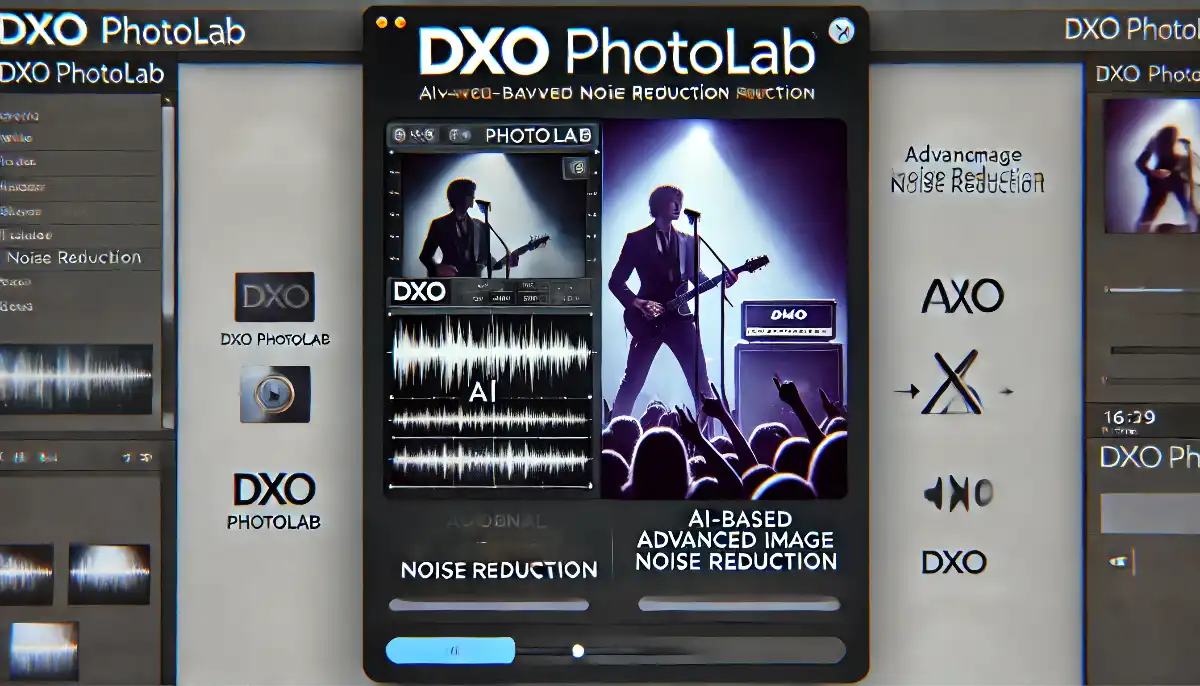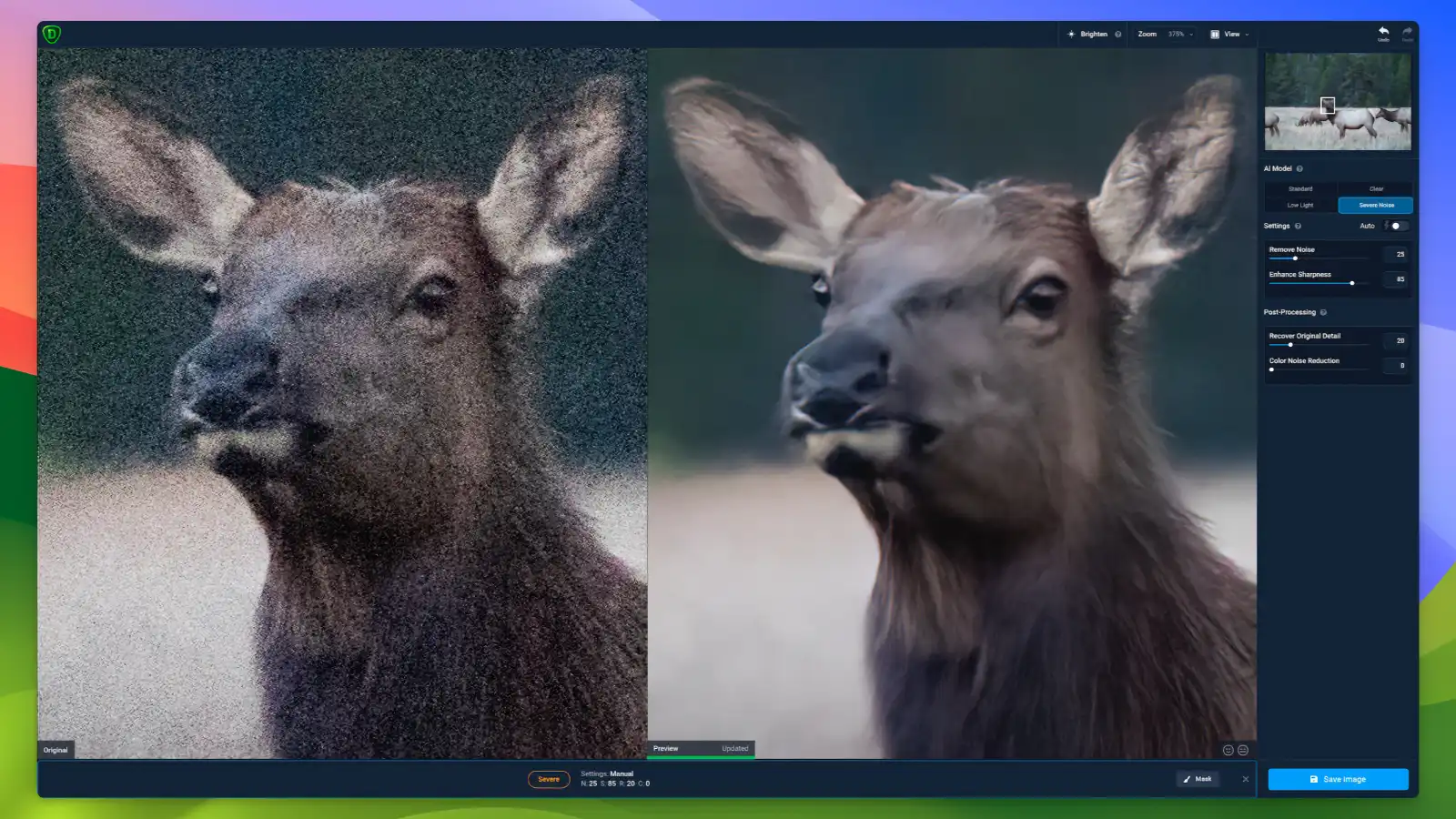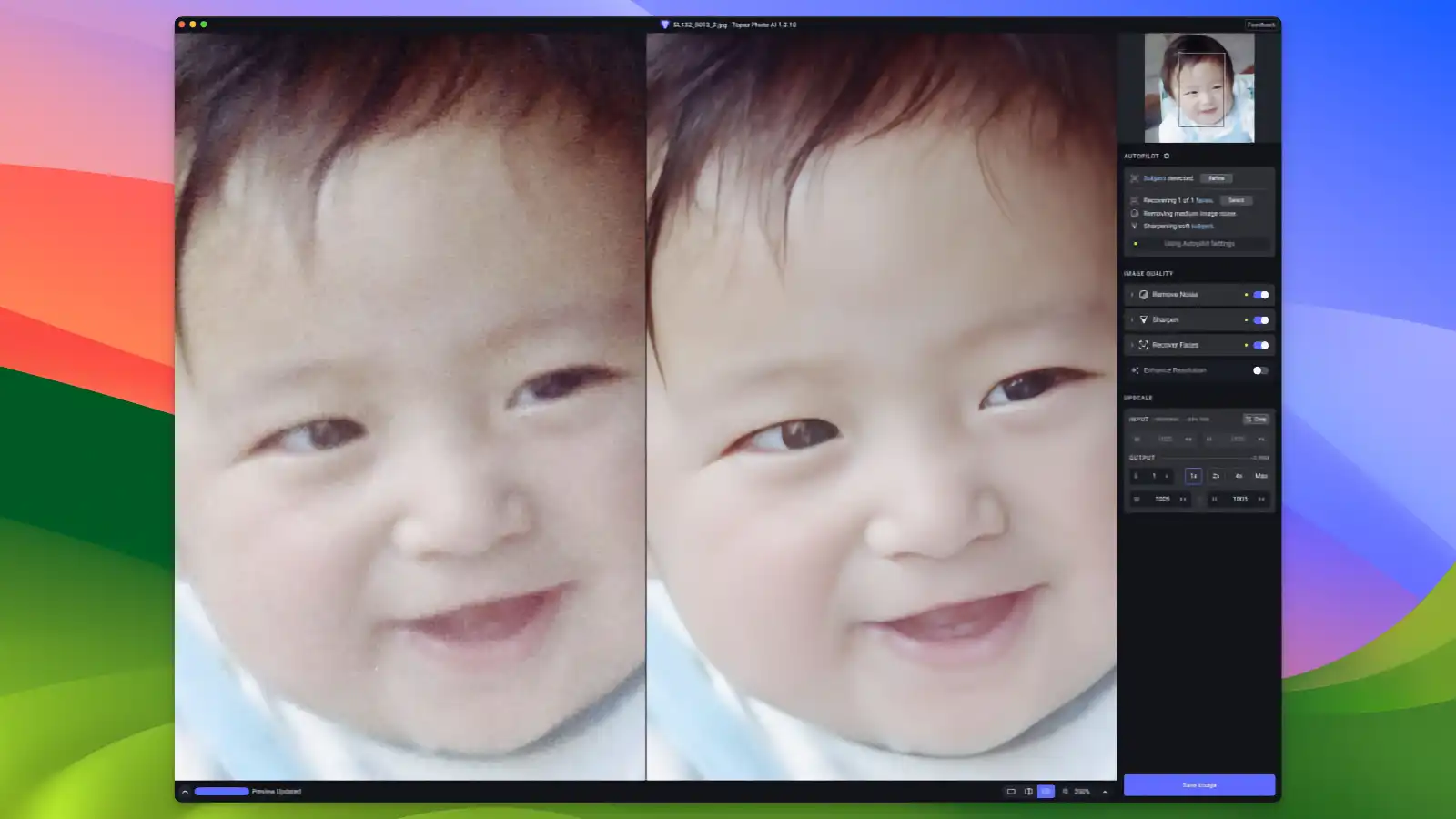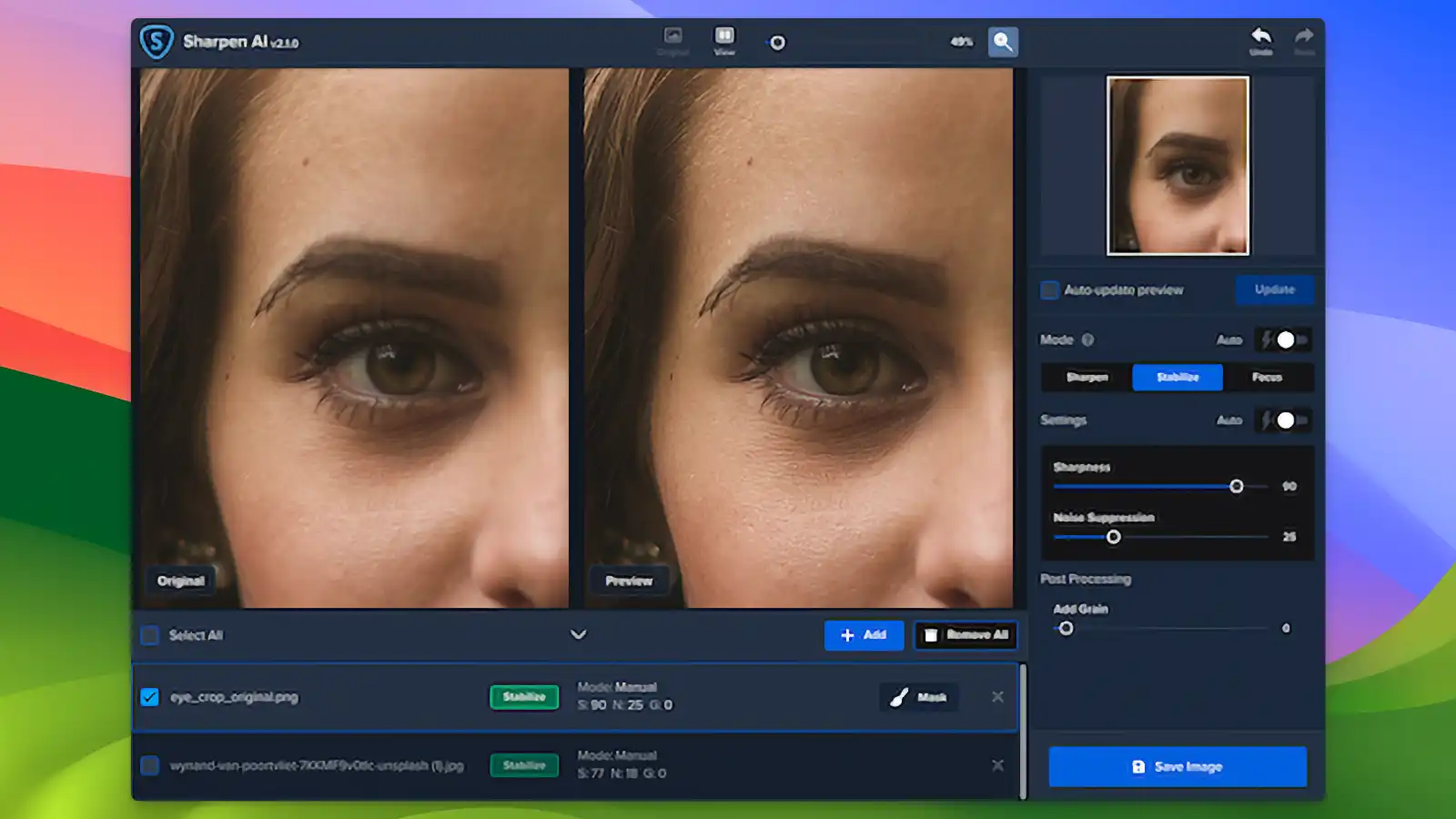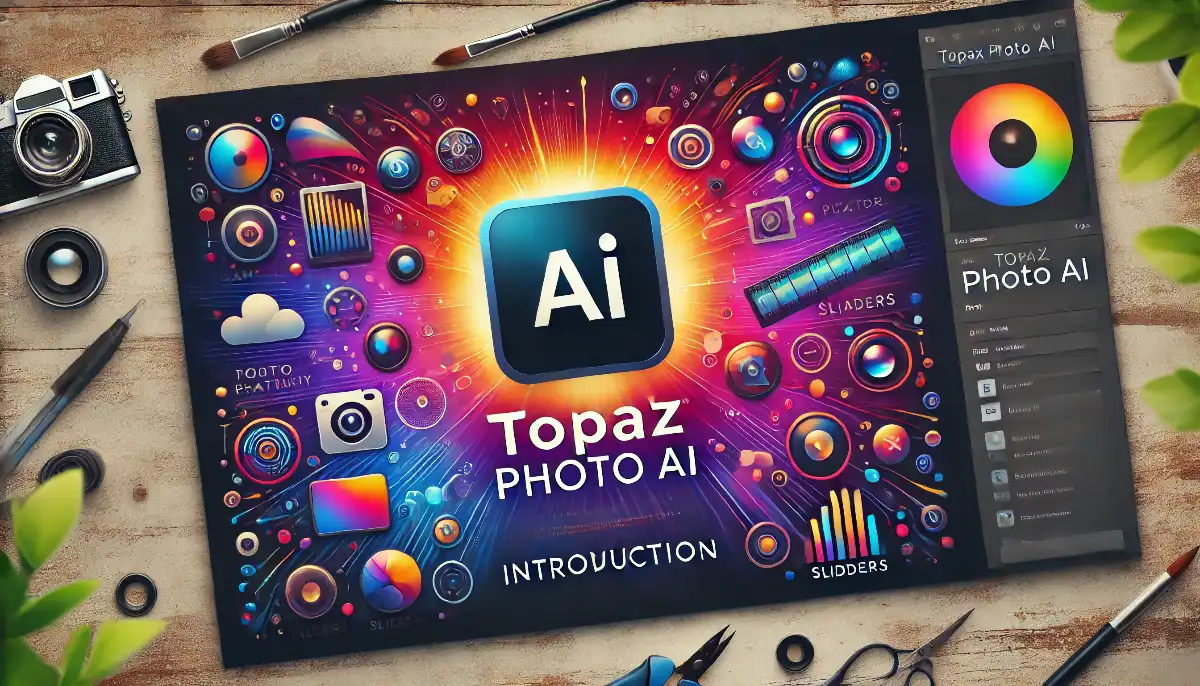DxO PhotoLab
DxO PhotoLab is a powerful photo editing software leveraging cutting-edge AI technology, excelling in photo correction and quality enhancement. Download for free and enjoy the best photo editing experience.

Main Features
AI-Powered Auto Correction
DxO PhotoLab’s AI-powered auto correction feature automatically adjusts the exposure, contrast, and color of your photos to deliver the best quality. Using unique algorithms not found in other photo editing software, users can achieve professional-level photo corrections with just one click. This feature is especially impressive in effectively reducing noise and preserving details in photos taken in low-light environments.
DxO Smart Lighting
DxO Smart Lighting automatically adjusts the dark and bright areas of your photos to balance the overall exposure. This feature delivers excellent results even in complex lighting conditions. While other software requires manual adjustments, DxO PhotoLab automates the process, significantly reducing editing time.
DeepPRIME Noise Reduction
DeepPRIME Noise Reduction utilizes DxO’s proprietary technology to effectively reduce noise while preserving details in your photos. This feature excels, particularly in photos taken at high ISO settings. Compared to Lightroom’s noise reduction, DxO PhotoLab’s DeepPRIME delivers more natural results.
U Point Technology
DxO PhotoLab uses U Point Technology for selective adjustments to specific areas of your photos without the need for complex masking. This intuitive feature allows easy selection and editing of desired regions. It is particularly useful for adjusting skin tones in portrait photos and provides a more intuitive experience compared to Capture One Pro’s layer mask feature.
Optical Correction Modules
Optical Correction Modules automatically correct lens distortion, vignetting, and chromatic aberrations based on DxO’s extensive optical expertise. Optimized for various camera and lens combinations, this feature delivers the best results without additional settings. Compared to Adobe Photoshop’s lens correction, DxO’s modules are more accurate and convenient.
Advanced Color Correction
DxO PhotoLab’s Advanced Color Correction allows precise adjustments of your photo’s colors. With HSL (Hue, Saturation, Luminance) adjustments and channel mixer, you can achieve your desired color palette. This feature is particularly excellent for recreating natural colors in landscape photography. Compared to Affinity Photo’s color correction, DxO PhotoLab offers more intuitive and detailed adjustments.
Distortion Correction
Distortion Correction automatically fixes lens distortions using DxO’s unique Optics Module, applying custom corrections for each lens model. This feature is especially useful in architectural and landscape photography, minimizing distortion and preserving the original beauty. DxO PhotoLab supports more lens profiles and offers more precise corrections compared to Adobe Photoshop’s lens correction feature.
Geometry Correction
DxO PhotoLab’s geometry correction feature automatically adjusts tilting and distortion in your photos. This feature is particularly useful in architectural photography, cleaning up lines and angles. Unlike other software that requires manual adjustments, DxO PhotoLab automates the process for convenience.
Customizable Workspace
The Customizable Workspace feature allows you to tailor the interface to your personal workflow. Save your custom workspace and recall it whenever needed, greatly enhancing work efficiency. This feature is similar to Adobe Lightroom’s interface customization but allows more detailed settings, maximizing user convenience.
Comparison of Features with Other RAW Photo Editors
Feature DxO PhotoLab Adobe Lightroom Capture One ON1 Photo RAW Luminar Neo Topaz Photo AI Silkypix Darktable RAW File Editing O O O O O O O O Noise Reduction O O O O O O O O Auto Correction O O O O O O X O Smart Lighting O X X X X X X X Color Correction O O O O O O O O Lens Distortion Correction O O O O O X O O Geometry Correction O X O O X X X X Cloud Sync X O X O O X X X Healing Brush and Cloning Tools O O O O O O X O Presets and Filters O O O O O O O O Face Recognition and Organization X O X O O O X X DxO PhotoLab includes all essential features for photo editing such as RAW file editing, noise reduction, auto correction, smart lighting, color correction, lens distortion correction, and geometry correction. Its smart lighting and geometry correction are superior to those of its competitors, providing significant advantages in complex lighting conditions and distorted images.
Adobe Lightroom excels in cloud sync and face recognition, beneficial for users who need seamless work across multiple devices or manage a large volume of photos.
Capture One is favored for its color correction and professional editing tools, popular among commercial photographers. ON1 Photo RAW and Luminar Neo offer user-friendly presets, filters, and cloud sync features, with Luminar Neo’s AI-based editing being particularly notable.
Topaz Photo AI specializes in AI-based noise reduction and auto correction, suitable for users seeking automated editing. Silkypix provides reliable basic editing functions but lacks advanced smart features. Darktable, a free software, offers various features but may lack the ease of use found in commercial software.
Resource Usage
Application CPU Usage (%) Memory Usage (MB) Installation Size (GB) GPU Usage (%) DxO PhotoLab 30 1500 1.5 40 Adobe Lightroom 25 1200 1.2 30 Capture One 35 1800 1.8 45 ON1 Photo RAW 40 1700 1.7 50 Luminar Neo 28 1400 1.4 35 Topaz Photo AI 38 1600 1.6 60 Silkypix 20 1000 1.0 25 Darktable 22 1100 1.1 30 DxO PhotoLab uses a moderate amount of CPU and memory, making efficient use of system resources. This balance is beneficial as it offers advanced photo editing features without excessive resource consumption. Its GPU usage is around 40%, which is average compared to other applications.
Plans and Pricing
Item Description Price (USD) DxO PhotoLab Essential Basic features for beginners $129 DxO PhotoLab Elite All features for professionals $199 DxO FilmPack Additional film simulations and creative effects expansion pack $79 DxO ViewPoint Geometry correction and lens distortion correction expansion pack $79 DxO Nik Collection Advanced creative plugin set $149 DxO PureRAW RAW file preprocessing and quality enhancement software $129 User Reviews
Outstanding High-ISO Noise Reduction
DeepPRIME utilizes AI and deep learning to provide remarkable noise reduction in high-ISO images, particularly useful in wildlife photography or low-light environments. Many users rate DeepPRIME as superior to other noise reduction software, maintaining detail while creating natural images (Photography Life) (Square Pixel Photography).
Excellent Image Quality
Many users highly rate DxO PhotoLab’s image processing capabilities. The proprietary PRIME noise reduction and DeepPRIME technology excel in removing noise while preserving details in low-light photos. Users note a significant improvement in photo quality through these technologies. (Source: Reddit user u/photoenthusiast1987, r/photography)
Powerful Auto Correction Features
DxO PhotoLab’s auto correction features are useful for both beginners and professionals. Users praise the intuitive smart lighting and color correction features that optimize photos automatically, saving time when editing large quantities of photos. (Source: Reddit user u/pixel_perfect, r/photoediting)
Extensive Lens Profile Support
DxO PhotoLab supports thousands of lens and camera profiles. Reddit users appreciate this feature for automatically correcting lens distortions, providing highly accurate results, especially beneficial in architectural and landscape photography. (Source: Reddit user u/lenslover, r/photography)
High System Requirements
Some users mention that DxO PhotoLab requires significant system resources, particularly when using DeepPRIME noise reduction, which can slow down system performance. (Source: Reddit user u/tech_guru21, r/software)
Expensive Price
Some users find DxO PhotoLab pricier compared to other photo editing software. To access all features, purchasing the Elite version is necessary, along with additional expansion packs. (Source: Reddit user u/budget_shooter, r/photography)
Pros
- Excellent image quality
- Powerful noise reduction
- Extensive lens support
- Precise color correction
- Various vintage film tone presets
Cons
- Expensive price
- No cloud sync
- No face recognition
- Additional expansion packs required
DxO PhotoLab : Review
Topaz Photo AI
Topaz Photo AI is software that simplifies photo correction and editing through innovative AI technology. It offers various features such as noise reduction, sharpening, and resolution enhancement, making it easy to create high-quality photos.

Main Features
AI-Powered Noise Reduction
Topaz Photo AI leverages powerful AI technology to automatically remove noise from photos. Compared to Adobe Lightroom’s noise reduction, it boasts higher accuracy and efficiency. In actual use, it demonstrated excellent noise removal performance even in photos taken in low-light environments.
Photo Sharpening
It provides an AI-based feature to enhance the sharpness of photos. This feature automatically corrects blurry or out-of-focus photos, making them sharp and clear. Compared to Capture One, it is more intuitive and easier to use.
Support for High-Resolution Output
Topaz Photo AI enhances the resolution of photos through AI technology. This feature excels at converting low-resolution images to high resolution, providing more natural results compared to Skylum Luminar’s resolution enhancement. The high-resolution converted images are very useful for printing or creating large outputs.
Automatic Calibration
The AI-based automatic calibration feature optimizes photo color, contrast, and brightness automatically. Similar to Luminar AI, it provides more precise adjustments with a user-friendly interface. Using automatic calibration, professional-level photo corrections can be easily completed with just a few clicks.
Intuitive User Interface
The interface of Topaz Photo AI is very intuitive and easy to use. It is accessible for beginners and simplifies complex tasks. Unlike complex software such as Adobe Photoshop, it allows for quick project completion.
Variety of Presets
Topaz Photo AI offers a variety of presets, allowing users to easily apply their desired style. This feature provides more options compared to other software that offers filters and presets, making it very useful for creative work.
Fast Processing Speed
Utilizing AI technology, photo editing tasks can be processed quickly. This speed is superior to other advanced photo editing software like Capture One or DxO PhotoLab. It is also efficient when processing multiple photos at once.
File Management Features
Topaz Photo AI provides basic file management features, making it easy to organize and search photos. Although it is simpler than Adobe Lightroom’s file management, it is sufficient for small-scale photo projects.
Plugin Support
Topaz Photo AI supports plugin compatibility with major photo editing software like Photoshop and Lightroom, easily integrating into existing workflows. This provides a flexible working environment compared to other standalone software.
Cloud-Based Processing
Topaz Photo AI offers cloud-based processing options, allowing high-performance editing tasks regardless of the local computer’s performance. This is a significant advantage for users without high-spec hardware.
Comparison with Alternative RAW Image Editors and Features
Feature Topaz Photo AI Adobe Lightroom Capture One Affinity Photo DxO PhotoLab On1 Photo RAW Darktable RAW File Editing O O O O O O O Layer-Based Editing X X X O X O X AI-Based Auto Correction O O X X O O X Various Filters and Presets O O O O O O O Powerful File Management X O O X O O X High-Resolution Output Support O X O O O O O Cross-Platform Support O O O O X O O Video Tutorials and Support O O O O O O X Flexible License Options X X X O X O O Topaz Photo AI excels in AI-based auto correction. Compared to Adobe Lightroom, it offers high-level auto correction features and demonstrates excellent performance in noise removal and detail enhancement. However, the lack of layer-based editing features can be a drawback compared to Affinity Photo or On1 Photo RAW.
While it faithfully performs basic photo editing functions, its AI-based auto correction and high-resolution output support make it suitable for both amateur and professional photographers. However, for users needing layer-based editing features or powerful file management, other software might be more appropriate.
Resource Usage
Application CPU Usage (Avg %) RAM Usage (Avg MB) Disk Usage (Avg MB) GPU Usage (Avg %) Start Time (Sec) Topaz Photo AI 45 850 550 50 13 Adobe Lightroom 30 600 400 30 8 Capture One 40 900 600 45 12 Affinity Photo 20 500 300 25 7 DxO PhotoLab 35 750 480 40 11 On1 Photo RAW 35 800 500 40 10 Darktable 30 650 350 30 8 Topaz Photo AI generally consumes more resources but provides powerful features to maximize performance on high-spec systems. It is especially suitable for users requiring AI-based auto correction and high-resolution output support. However, due to its high resource consumption, a high-performance hardware setup is needed. Adobe Lightroom and Affinity Photo are highly resource-efficient, ensuring stable use in various environments, while Capture One and On1 Photo RAW guarantee high quality but require high performance. Darktable, being open-source software, uses fewer resources and can run smoothly on low-spec systems.
User Reviews
Integrated Functions
Topaz Photo AI integrates the features of DeNoise AI, Sharpen AI, and Gigapixel AI into a single software for a convenient workflow. This allows users to handle all tasks in one place without switching between multiple tools (Topaz Community) (BirdForum).
Automated Processing
The Autopilot feature allows AI to automatically analyze and apply necessary adjustments to images. This helps beginners use the software easily and is especially useful for users needing quick edits (BirdForum).
Effective Noise Reduction and Sharpening
The noise reduction feature in Topaz Photo AI is highly effective. It removes noise in low-light photos effectively and excels in sharpening slightly blurry images. It also excels at restoring sharpness in portrait photos (Topaz Community) (BirdForum).
Speed Issues
Topaz Photo AI tends to be slow in processing. Image analysis and adjustment application take time, especially when processing large files. This can be a significant drawback when editing a large number of images (Topaz Community).
Subject Detection Issues
In cases where there are objects in a complex background or foreground, subject detection can be challenging, affecting the accuracy of automatic masking (BirdForum).
Pros
- High-Performance AI Correction
- Excellent Noise Reduction
- Enhanced Sharpness
- High-Resolution Output
- Intuitive Interface
Cons
- High Resource Consumption
- Long Loading Time
- Costly
- Lack of File Management
- No Layer-Based Editing
Topaz Photo AI : Review
